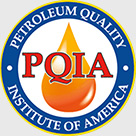 Bouncing back from downtime can be a challenge, but steps can be taken to ensure the process goes quickly and efficiently.
Bouncing back from downtime can be a challenge, but steps can be taken to ensure the process goes quickly and efficiently.
It’s no secret that downtime can be costly to businesses of all shapes and sizes across a wide range of industries. Costs can get out of control quickly, especially for those in the automotive industry. Industries like manufacturing, metalworking and mining can be extremely vulnerable to downtime, as they rely on complex machinery and detailed processes daily.
There has been a lot of discussion on ways to prevent downtime before it happens. While prevention is important, the odds are that every company is going to face downtime at some point. It is important to have a plan for getting back on track as well as a plan for preventing downtime in the first place.
Related: Logistical Issues Add Difficulty to Fleet Management
Understanding what steps need to be taken to achieve full operational recovery will go a long way in minimizing downtime and preventing loss. While there are some details that will change from industry to industry, there are a few simple, universal things that can help any company put together a baseline strategy for when things go wrong. Some strategies include:
Identify possible trouble points in your facility – Some equipment is going to break down more often than other equipment, whether it is due to age, complexity or other factors. Some products are more likely cause issues than others. Identify these potential problem spots and come up with a detailed checklist for what to do if something goes wrong.
Define Roles – Make sure everyone knows their role when it comes to getting everything back in order. Each scenario is going to be different and some are going to require more resources than others, but everyone should know what their role is in downtime scenarios, from repair, to cleanup, to management and anything else that is necessary.
Practice Makes Perfect – Having a plan is great, but it won’t help much if you or your employees can’t execute it. Taking some time, even just a few minutes, to walk through and practice your plan. Maybe even have an official training session every quarter. This will ensure everyone can act right away and avoid a panic, which will make coming back online easier.
Have your contact list in order – Your problem may require you to bring in some help immediately, whether it is from outside the company or another part of your facility. Having a set contact list for these situations can greatly reduce the time spent trying to figure out who that person is. You may need to do more than just call a tech. If your equipment is leaking fluid, do you need to report it? What about if repairs require handling hazardous material? Reaching out right away could prevent even more long-term damage.
Backups to Backups – Keep backup products and parts in stock. It may not be feasible for everything but having an equipment part on hand versus having to order it can save days when it comes to going back online. That goes for lubricants and fluids too. If you repair a leak quickly, but still don’t have the fluid you need to put back into your system, its not much better in terms of downtime than not fixing the leak at all.





